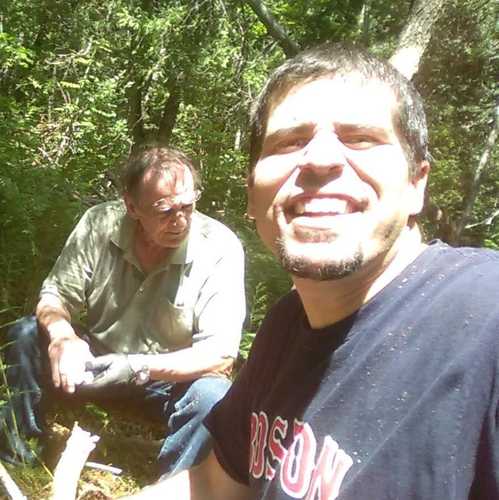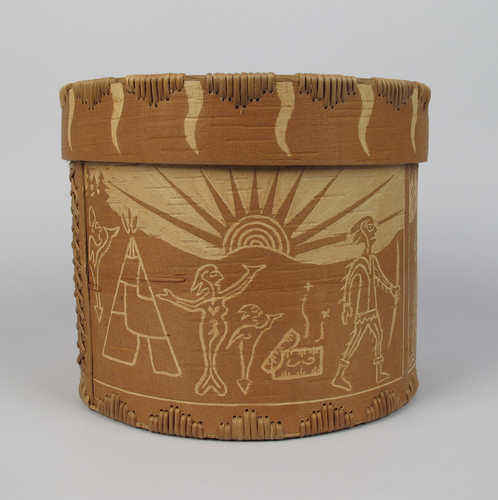Keywords: Indian baskets
Item 10050
Penobscot band basket, Indian Island, ca. 1880
Contributed by: Hudson Museum, Univ. of Maine Date: circa 1880 Location: Old Town Media: Ash, dyes
Item 104440
Josie Moriarty selling baskets, Indian Island, ca. 1930
Contributed by: Maine Historical Society Date: circa 1930 Location: Indian Island Media: Postcard
Exhibit
Passamaquoddy Indians from Washington County traveled to Portland in 1920 to take part in the Maine Centennial Exposition. They set up an "Indian Village" at Deering Oaks Park.
Exhibit
Gifts From Gluskabe: Maine Indian Artforms
According to legend, the Great Spirit created Gluskabe, who shaped the world of the Native People of Maine, and taught them how to use and respect the land and the resources around them. This exhibit celebrates the gifts of Gluskabe with Maine Indian art works from the early nineteenth to mid twentieth centuries.
Site Page
Mount Desert Island: Shaped by Nature - The Indian Encampment
"… Wabanaki village to peruse and purchase handmade baskets and a host of other wares. In addition to goods that could be carried away in hand, some…"
Site Page
Mount Desert Island: Shaped by Nature - The Indian Encampment: Behind the Scenes
"The Indian Encampment: Behind the Scenes Indian encampment, Bar Harbor, 1881Abbe Museum All the cooking at the Indian encampment is done…"
Story
The Tomah Basket
by James Boyce
Learning to make Maliseet Tomah baskets
Story
Why environmental advocacy is critical for making baskets
by Jennifer Sapiel Neptune
My advocacy work for the Maine Indian Basketmakers Alliance
Lesson Plan
Grade Level: 3-5, 6-8, 9-12
Content Area: Science & Engineering, Social Studies
This lesson plan will give middle and high school students a broad overview of the ash tree population in North America, the Emerald Ash Borer (EAB) threatening it, and the importance of the ash tree to the Wabanaki people in Maine. Students will look at Wabanaki oral histories as well as the geological/glacial beginnings of the region we now know as Maine for a general understanding of how the ash tree came to be a significant part of Wabanaki cultural history and environmental history in Maine. Students will compare national measures to combat the EAB to the Wabanaki-led Ash Task Force’s approaches in Maine, will discuss the benefits and challenges of biological control of invasive species, the concept of climigration, the concepts of Traditional Ecological Knowledge (TEK) and Indigenous Knowledge (IK) and how research scientists arrive at best practices for aiding the environment.














